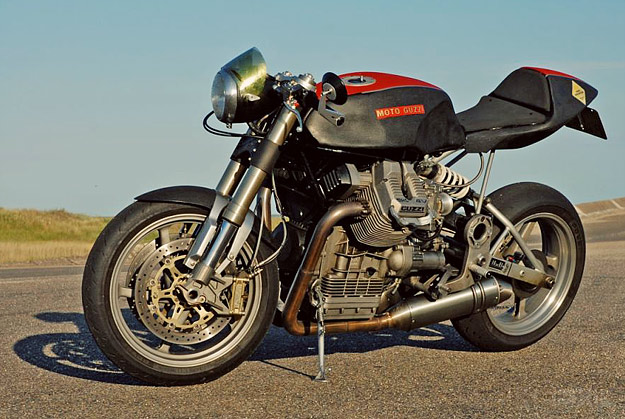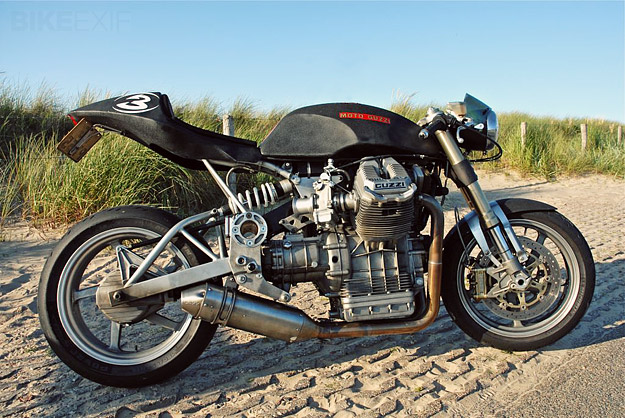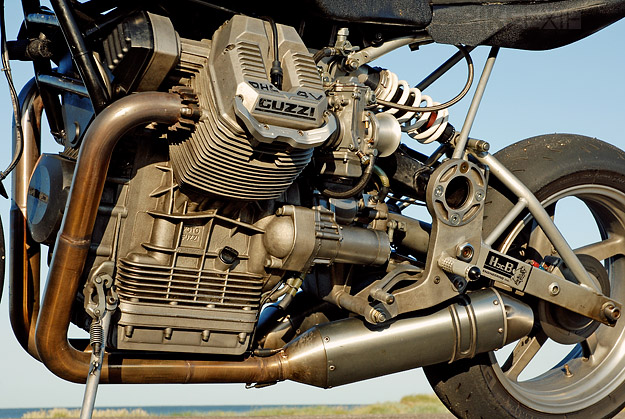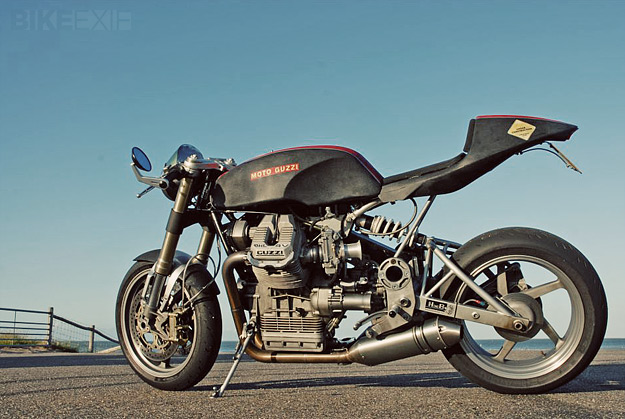
The 4-valve Guzzi motor has to be one of the most imposing powerplants of all time. And Jasper Mulder, a marine contractor currently working in Nigeria, was so smitten he chose his 1993 Moto Guzzi Daytona on the strength of that motor alone. “After a huge accident on a modern superbike that broke my leg in several places, it was time to slow down a bit,” says Mulder. He’s always loved the looks of Guzzi’s liter-class V-twin, so he bought the Daytona without even a test drive. “After the first fast ride on the thing, it was obvious that the handling and brakes had to be improved. So that’s where it all started.” The bike is currently a work in progress, but it already has a certain brutal beauty. Mulder’s first goals were to improve the ride, brakes and chassis—and then the looks.

“I don’t like the polished look of most cafe racers—that’s why there’s wrinkle paint and bare unpolished aluminum,” says Mulder. “From a distance it looks like a ratty old thing, until people come closer and see the engineering and components.” Mulder has a friend who is a master metalworker, so the two of them worked together to build the bike. The forks are 50mm MV Agusta items with specially made billet fork ends to mount the radial RSV brake calipers. A new custom steering head accommodates the forks and shortens the rake by two degrees. “The chassis is perfect now,” says Mulder. “Very fast steering and still stable in fast corners.” (There’s 24 degrees of rake and a 1438mm wheelbase now, instead of 26 degrees and 1480mm.)

The engine also received attention. Mulder removed the stock Magneti Marelli injection/ignition system, installing Volker Sachse digital ignition and Mikuni HSR 42mm Harley-Davidson carbs. (“To get the clean look … and big cylinders need big carbs.”) The exhaust system is home made, with bigger diameter 50mm pipes and motocross-style end cans picked up from eBay. The power runs through a hydraulic clutch and has been dyno’d at 96rwhp at 8000rpm and 100 NM of torque at 6400rpm. The rear wheel is no longer a 18”, by the way—Mulder modified a 17” RSV wheel to fit, narrowing it from 6 to 5.7 inches.
In the best cafe racer tradition there’s a smattering of handmade parts throughout, including the bellmouths on the Mikunis, and the windshield is the iridium visor from an old Arai helmet. Next on the list of things to do are a new subframe to support the Honda RS125 GP seat unit, a superbike-style aluminum swing arm, and a race-spec Penske 8987 shock.
All good stuff, but it doesn’t sound like Jasper Mulder is slowing down one bit.
